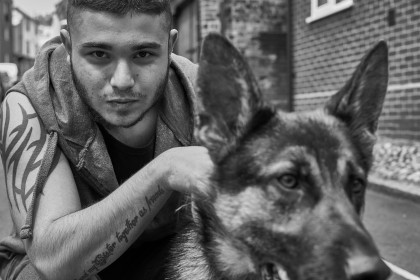Why you can trust TechRadar
Despite the lovely build and feel of the camera it is its image quality that makes it stand out. Pictures are really full of detail to a degree that we wouldn't expect from a normal 24MP sensor. Edges are smooth when viewed at 100%, and the artefacts of interpolation and compression don't make an appearance. JPEG files are just as well populated with texture and fine, uninterrupted detail as the raw DNG files are, and confusing or overlapping patterns never turn into a mush of moiré and interference. The benefits of each pixel reading out its own value, instead of cluster readings averaged across four (which is how regular color sensors work), makes a very big difference to the final result – as we would expect it to.
I compared a collection of images taken on the Monochrom with files recorded with the Nikon D610 in both its colour and black and white modes. While the D610 has a wider dynamic range and is much more capable of retaining highlight details with minimal effort on the part of the user, it is not as able to record fine detail as clearly as the Monochrom. The Leica files process a definition and clarity – a 'clean-ness' – that normal Bayer-pattern sensors cannot match.


Click here for a full size version.

Click here for a full size version.
The greatest difference between raw and JPEG files from this camera is that the JPEGs are less forgiving of the limited dynamic range of the sensor. Highlights burn out quite quickly, a fact not helped by some over-bright metering, and I found I was working between -0.3EV and -1EV compensation as standard.

Click here for a full size version.


Click here for a full size version.
Sign up for breaking news, reviews, opinion, top tech deals, and more.
Unsurprisingly, JPEG files return with a good deal more punch in the middle tones than the raw files do, and they look good and ready to print for it. Raw files need a proper boost to get them going and looking three dimensional – but the great thing is they can cope with it. I found the tones are really pretty flexible in the centre of the range, and stretching and compressing can be done without hard transitions appearing. There is a lovely soft quality to unworked images that suits some subjects much better than others, but which works especially nicely for low contrast portraiture. Obviously, as much contrast as you like can be injected afterwards for a whole range of looks.
Noise isn't much of an issue either, as what exists isn't anywhere near as destructive as normal image noise. At ISO settings up to and including ISO 1600 noise is hardly noticeable. When it appears at higher settings it is as a fine grain that is atmospheric rather than objectionable. A definite benefit of the filter-less, non-interpolating sensor is that noise doesn't destroy detail, and even the noise-reduction that takes place in JPEG files leaves behind fine textures and detail. Images shot at ISO 320 and 400 are just extremely smooth and capable of recording the finest detail. There is a faint base texture, but the overall appearance is of a very clean image.

Click here for a full size version.

Click here for a full size version.

Click here for a full size version.

Click here for a full size version.

Click here for a full size version.

Click here for a full size version.
